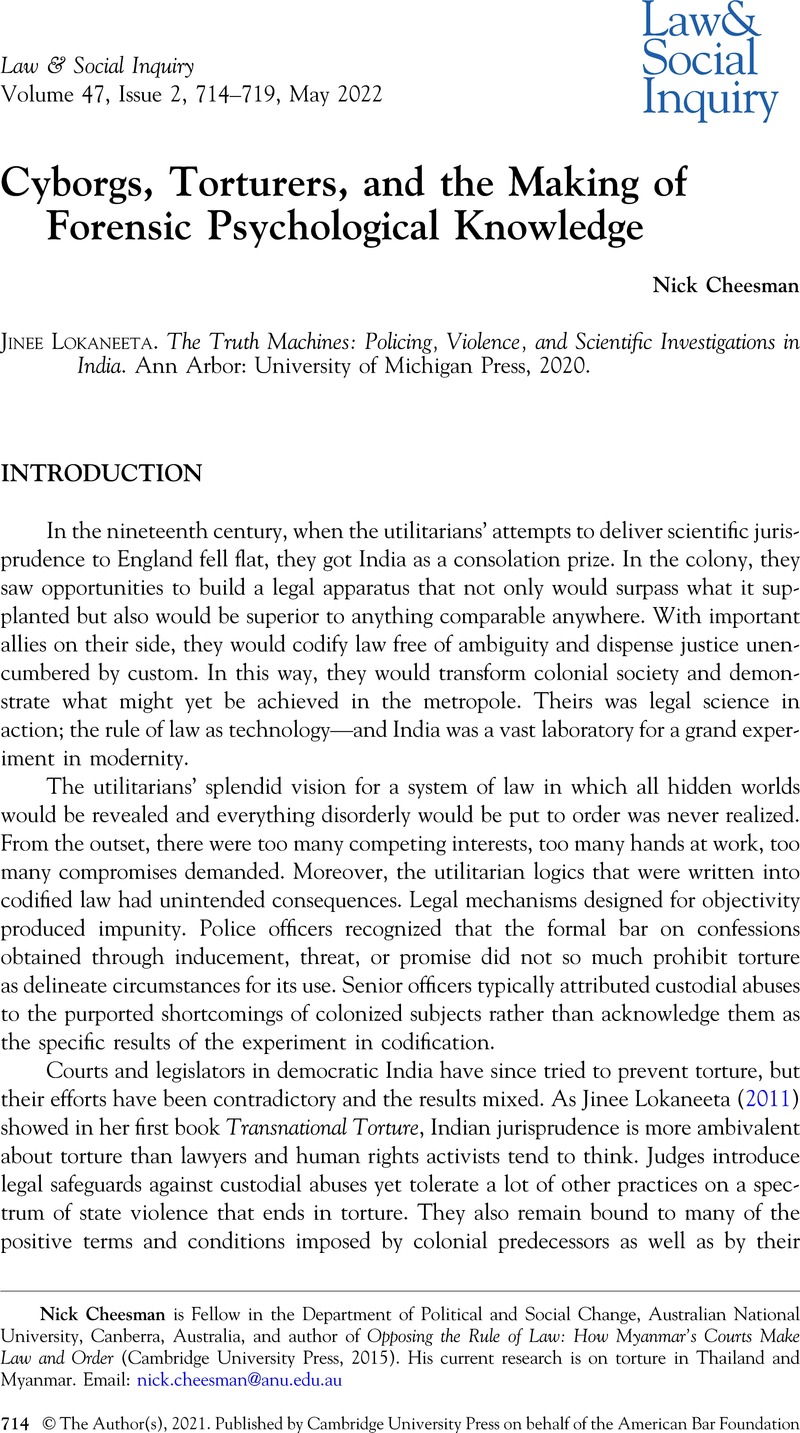Crossref Citations
This article has been cited by the following publications. This list is generated based on data provided by Crossref.
Cheesman, Nick
2023.
Torture in Thailand at the Limits of Law.
Law & Social Inquiry,
Vol. 48,
Issue. 1,
p.
236.


